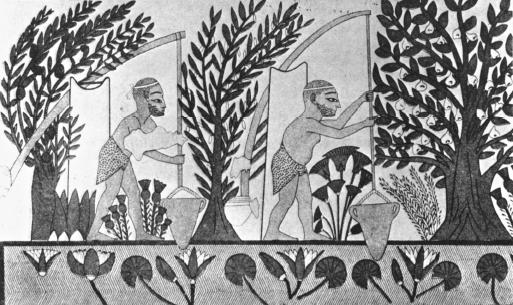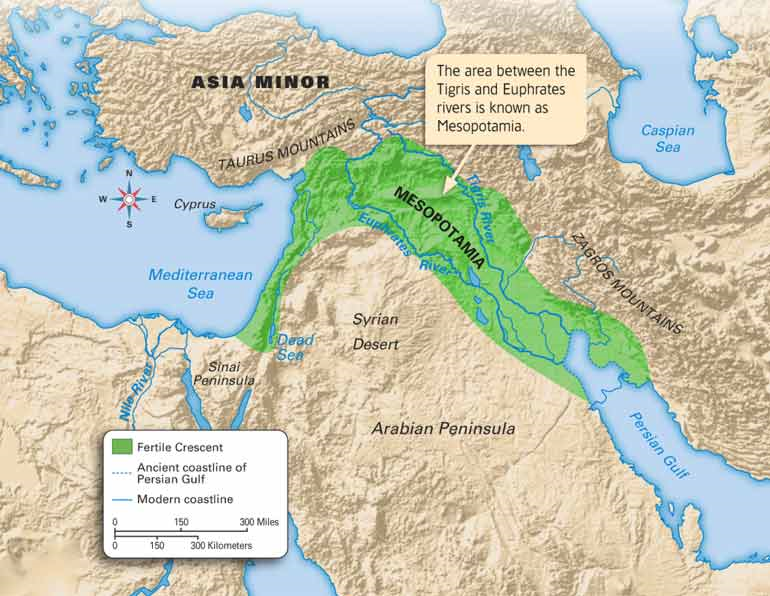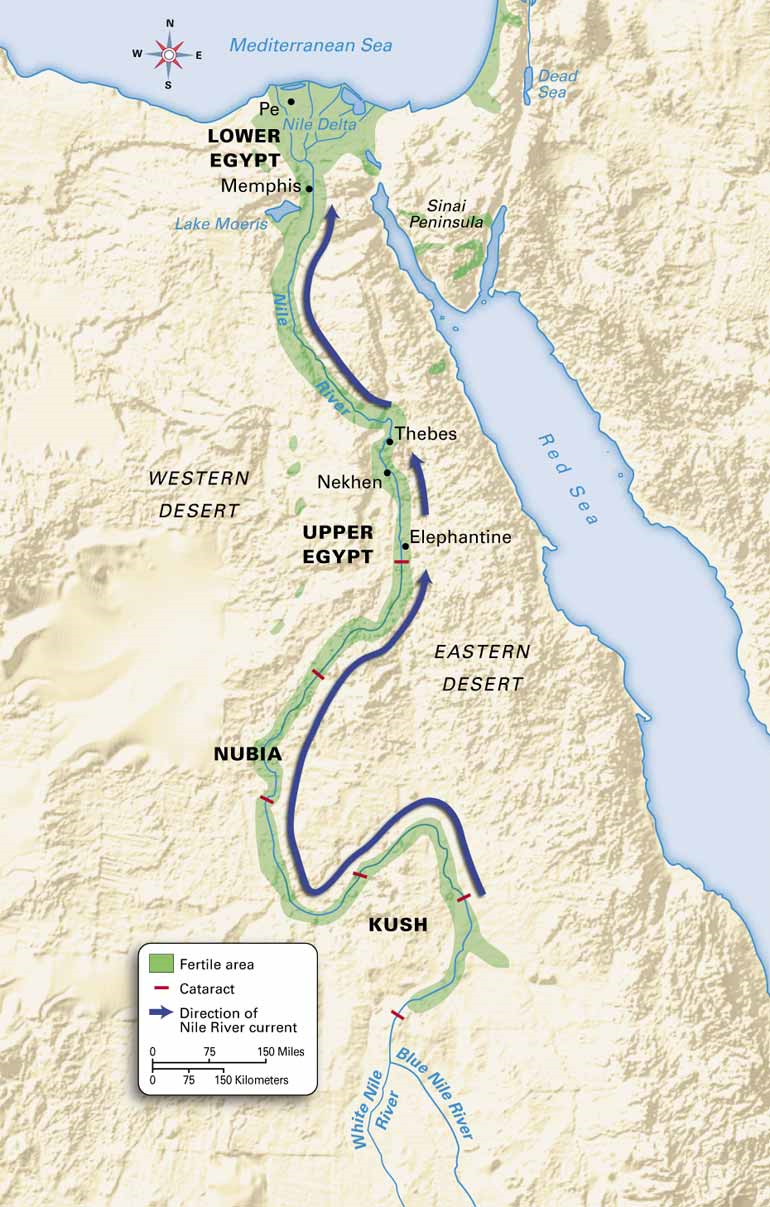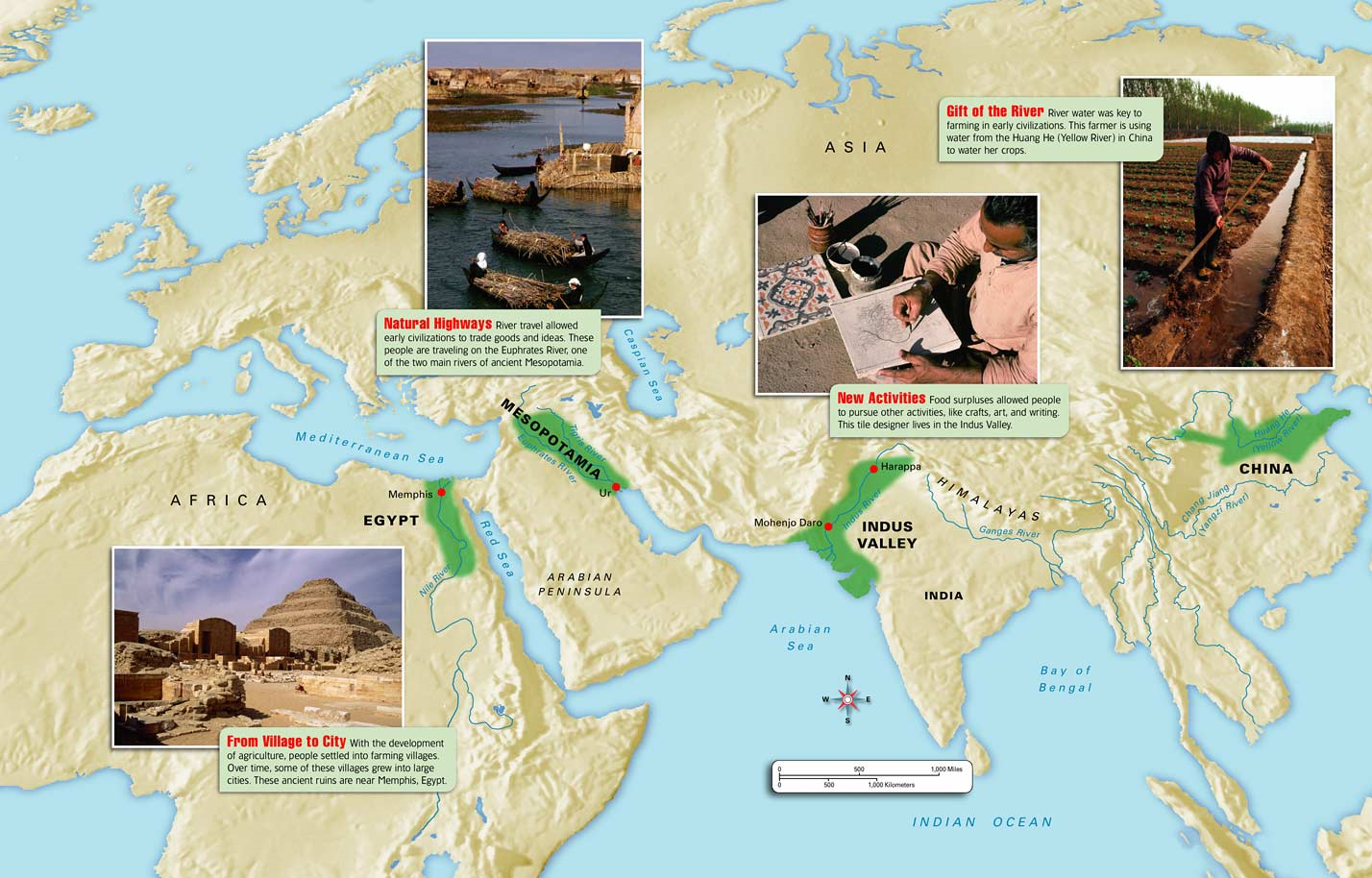Egypt and Mesopotamia were two civilizations that bore as many similarities as did differences. Mesopotamia was originally concentrated in Tigris and Euphrates rivers valleys though it gradually spread to other areas. The effects of the Tigris and Euphrates rivers largely impacted the Mesopotamian culture more so about its frequent and destructive floods. This is unlike the Egyptian scenarios where the Nile was predictable and its people’s civilization centered on its activities. It was viewed by Egyptians as an unending blessing from the gods and goddesses of the land. Significantly, it contributed to the development of the first calendars which were based on the river’s cycles.
The cultures in Egypt and Mesopotamia are largely a product of flooding. Civilizations in these nations largely revolved around the respective rivers and occurred at the same period. The river valleys and the geographical patterns associated with flooding dictate the outcomes in various aspects including agriculture, religious groupings, and structures of living (Nicolas 86). While in Egypt, cultures were largely shaped by the Nile River, Mesopotamia was affected by Euphrates and Tigris rivers.
In Egypt, there was an annual overflow of banks of the Nile River. This resulted in the depositing of rich, natural fertilizing elements which attracted various economic activities along the banks and beyond. Unlike the unpredictable overflow of River Tigris and the Euphrates in Mesopotamia, the Nile’s activities were predictable (Nicolas 88). The Euphrates and Tigris often resulted in destructive floods, hurricanes, torrential downpours, inundating of villages and cities, and deaths (Michael 32). Mesopotamia was largely open to the effects of floods unlike Egypt was protected by natural barriers.
Religious beliefs in Egypt were likewise influenced by the activities of the Nile. The predicted flooding patterns contributed to the countries economic prosperity and hence the religious beliefs were largely founded on the Nile as a gift from God. In Mesopotamia, the case was different; religion was bleak and lacked vitality. The calamities resulting from floods were considered as sent by the gods and goddesses (Michael 32). This message is best illustrated in the Gilgamesh epic. Governance was also shaped by flooding activities. The need for organized governance structures to facilitate the development of dikes and systems used in irrigation was also a product of flooding.
Flooding of these rivers however contributed to the positive economic growth of the countries. The first successful efforts to control the flow of water were recorded in these two countries. It is historically factual that human activities are often concentrated along waterways. Settling patterns in Mesopotamia were dictated by the relatively fertile lands resulting from River Tigris and Euphrates deposits (see attached figs 2 and 3). The settlers learned ways of irrigating lands surrounding the two rivers. This paved way for the creation of a system of canals and waterways (Payne 76). Additionally, the agricultural patterns were shaped by flooding whereby after planting and harvesting in early spring, the fields were left to lie idle until July when floods would return. A key invention to facilitate agriculture by the Egyptians was the shaduf (see fig. 1) which was used to put water into the self-made irrigation canals. Both the irrigation system used in Egypt and Mesopotamia were basin type.

In conclusion, it is important to reiterate that the two cultures are all a product of flooding though in uniquely individual ways. Unlike Mesopotamia, Egyptians viewed flooding of the Nile as a blessing in disguise. Mesopotamia on the other hand viewed the flooding as a calamity that came with destructive activities. Their activities unlike that of Egyptians focused on controlling the flooding activities. However, both reaped a lot culture-wise as a result of the flooding of their respective rivers.



Works Cited
Adams, Ryan. Heartland of Cities, Surveys of Ancient Settlement and Land Use on the Central Floodplain of the Euphrates. Chicago, IL: University of Chicago Press, 1965.
Butzer, Klein. Early Hydraulic Civilization in Egypt. Chicago, IL: University of Chicago Press, 1976.
Grant, Michael. The Ancient Mediterranean. New York: Penguin, 2002.
Nicolas, Grimal. A History of Ancient Egypt. New York: Blackwell Publishers Ltd, 1997.
Payne, Richter. The Canal Builders. New York: Macmillan, 1959.
Wittfogel, Keegan. The Hydraulic Civilization: Man’s Role in Changing the Earth. Chicago, IL: University of Chicago Press, 1956.